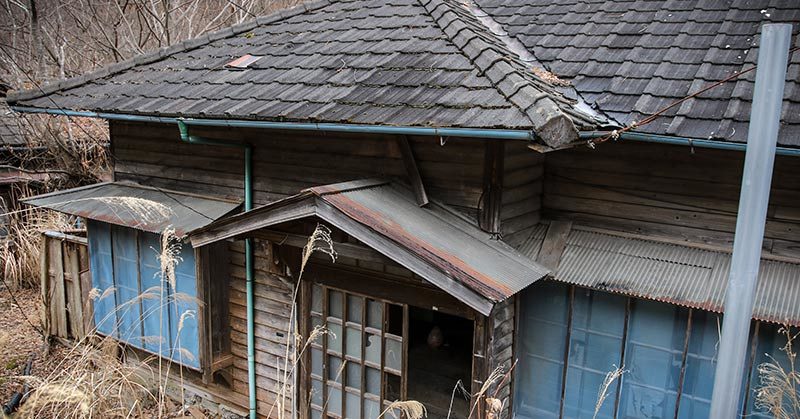Like many countries, Japan is facing a housing crisis. Unlike those countries, Japan’s is for the opposite reason: They have more homes than they have people. For this reason, they started giving away abandoned houses – but are they really free? Here’s what you should know.
Why is Japan Giving Away Abandoned Houses
Japan has one of the oldest populations in the world. According to the National Institute of Population and Social Security, Japan’s population, which was 127 million in 2015, is expected to drop dramatically over the next several decades.
By 2040, they expect a population of 110.92 million, then 99.24 million by 2053, and then 88 million by 2065. Not only are fewer and fewer people needing homes, but young people are leaving small towns for opportunities in the cities. These towns are known as akiya towns, akiya meaning “vacant homes”.
According to a local report done in 2014, approximately 896 Japanese towns could essentially go extinct by 2040.
Why Aren’t People Buying These Homes?
There are several reasons:
- As the towns’ populations decrease, so does opportunity.
- Residents have to drive hours into the nearest city for their job unless they can work from home or start a new enterprise in the town.
- Younger generations abandon them because they don’t want to pay the high property taxes.
Essentially, the actual akiya owner doesn’t want to admit that they own the house, because then they are liable to pay the taxes on it. This makes it hard to find the owner, so purchasing it and transferring it into another person’s name is difficult.
Read: Families Buy 97 Acres of Land in Georgia to Build Freedom Town
What Are “Akiya Banks”?
To attract people and families to these towns, the government has created “akiya banks” that provide incentives for younger people to come renovate and live in these homes.
Not Just Giving Away Abandoned Houses
These are websites that list properties for sale at very low rates. Homes are listed for little to (actually) zero yen. This doesn’t include:
- Administrative and management fees
- Registration and license tax
- Agent commission
- Acquisition and property tax
These will vary but estimate in the ballpark of $4000 US. (1) You also have to come to see the akiya in-person, to assess the state of the property. Some can be quite run-down after a decade or more of abandonment. You will need to be prepared to put quite a bit of money into renovating the home and property.
Other Restrictions
Each akiya will have their own clauses and restrictions. For example, some may require you to live in the house for 15 years or more in order to own the home. If you are a foreigner thinking of purchasing one, this may not be possible due to visa restrictions.
Others require you to rent the property for 20 years or more before the home and land can be transferred into your name. (1) Keep in mind, after all, their goal isn’t to sell homes, their goal is to save these towns from extinction.
In order to purchase an akiya, you may need to:
- Be 43-years-old or younger
- Be a younger, married couple
- Have children under middle or junior high age
If the akiya comes with farmland, there are even more restrictions, mostly that you are basically required to become a farmer.
Those who do move to akiya towns are expected to help improve the economy of the town, perhaps by opening a business such as a cafe. Either way, to say that these homes are “free” is more of a way to catch people’s interest.
Not Just a Japanese Problem
Japan has been traditionally an anti-immigration country. Combine that with a lower birth rate and an aging population, and you have a recipe for a rapidly declining population.
This is not just happening in Japan: The population in most countries around the world is also declining. More elderly people without the workforce to support them can cause numerous problems for a country.
So far the akiya incentive program has helped bolster some of these town’s populations, but how much will it help and how long will that last? Time will tell.

